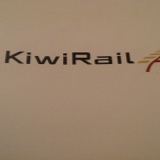Information
-
Audit Title
-
Document No.
-
Client / Site
-
Conducted on
-
Prepared by
-
Location
-
Personnel
Personal Protective Equipment (PPE) Required
-
Add media
Safety Notes
-
1. Applicable where a person may fall more than 3.0m
-
2. Refer to specific Safe Work Method Statement
-
3. Do not use faulty or out of date equipment
Risk
-
1. Overloading
-
2. Falling people
-
3. Falling objects
-
4. Suspension trauma
-
5. Electric shock
-
6. Failure of components
-
7. Incorrect use
-
8. Incorrect fitting improper erection
-
9. Electrical hazards
-
10. Instability
Planing
-
1. De-energize or insulate electric wires with matting and identify with "tiger tails" before work commences
-
2. Use barricades to prevent access into area where objects may fall
-
3. Where head protection
-
4. Provide edge protection to prevent objects falling from work platforms
Prestart Checks
-
LADDERS
-
Use only industrial ladders with minimum load rating of 120kg in a work place
-
Extension ladders may be used to ascend to a platform or roof to perform work
-
Do not perform work from an extension ladder if 2 hands are required to perform the work
-
A step ladder maybe used for light maintaince work for short periods of time
-
Use ladder on a firm, stable surface, secured against movement
-
SCAFFOLDING
-
Certified scaffolders must erect scaffolding other than prefabricated types, whereby a person or object could fall 4 meters or more
-
Scaffolding must be checked for stability before any person climbs on to or works from the scaffold
-
Safe accuse must be provided to all parts of scaffolding & work platforms
-
Prevent unauthorized access to incomplete or unattached scaffolds
-
Lock wheels on mobile scaffolds prior to any person climbing onto scaffold
-
Do not exceed the safe working load of any component of the scaffold. Display SWL on scaffold
-
Use leveling screws to ensure that all uprights are vertical
-
Provide fall arrest or fall prevention systems on fixed ladders
-
WORK PLATFORMS
-
Platforms must be a minimum of 225mm for light work, and 450mm for other work
-
Platforms must be capable of carrying any load required by the type of work
-
A platform must not be a distance created than 225mm from the wall
-
Fit guardrails & mid rails to prevent people from falling from outside edges of work platforms
-
Provide edge protection on outer edges where a person may fall more than the regulated height for the relevant state & when materials or other loose objects may be present on the platform
-
EDGE PROTECTION
-
Edge protection systems must be erected by a competent person & used in accordance with the manufactures instructions
-
A guardrail (minimum of 900mm high) I with mid rail and toe board designed to withstand any force which may reasonably be expected to fall against it must erected around the perimeter of the work to prevent persons falling
-
Provide hoardings or catch platforms with perimeter screening where objects may full onto people
-
ELEVATING WORK PLATFORMS
-
Total load in bucket of EWP (including personal tools and equipment, and materials) must not exceed the safe working load of the unit
-
Use lanyards to prevent tools from falling of the EWP
-
Persons in the EWP bucket must wear appropriate parachute type safety harness to prevent falling to the ground or onto any part of the EWP or truck
-
EWP's used for electrical work must be of an approved type for electrical work
-
Start powered equipment & tools outside of the bucket
-
Keep clear of electricity wires unless specifically authorized. Ensure clearance of .5m from lv wires
-
Do not carry flammable liquids in bucket
-
SCISSOR LIFTS
-
Total load platform (personal tools & equipment, & materials must not exceed the safe working load of the unit
-
Check operation of brakes, stops, outriggers, etc to ensure that unit is secure when platform is extended lower unit before moving
-
Use lanyards, etc, to prevent tools falling from platform during use. Keep body inside platform
-
Ensure Clarence of .5m from LV wires unless specifically authorized out electrical work
-
FALL RESTRAINT SYSTEMS
-
Components of restraint or fall systems must be compatible & have secure connections
-
Fall arrest systems must be installed by competent person only
-
Components of fall arrest systems must conform to the relevant Australian standard
-
A restraint belt may be used on a slope greater then 15 degrees or less, and where the length of the restraint will prevent any vertical free wall of the wearer
-
A work positioning or fall arrests harness must be worn on roofs & slopes greater then 15 degrees & where secure footing can be maintained
-
A person must be connected to at least one fall arrest wherever they are at risk of a fall
-
Use of an inertia reel is not recommend
-
SAFETY HARNESSES AND FALL ARREST DEVICES
-
Where a person may freefall a distance greater than 600mm a fall arrest harness attached to a suitable restraint system must be worn & fitted correctly
-
Fall arrests systems & harnesses must comply with Australian Standards As 1891.1 industrial Fall-arrest systems and devices - Safety belts & harnesses
-
Provide rescue equipment suitable for rescuing a person in minimum time from falling to reduce risk of suspension trauma
-
All people required to use safety harness must be fully instructed in their safe use prior to use
-
Other people on site must be instructed in safe rescue procedures
-
Ensure adequate fall clearance is available under work position
-
NO SIGNATURE/NOSTART
-
Add signature
-
Add signature
-
Add signature
-
Add signature
-
Add signature
-
Add signature
-
Add signature
-
Add signature
-
Add signature
-
Add signature
-
Add signature











